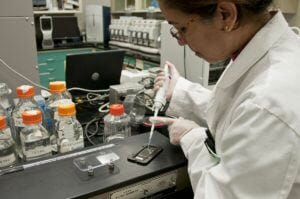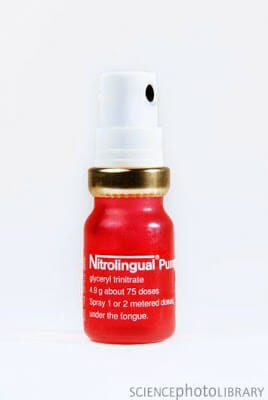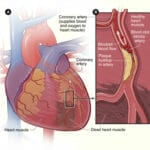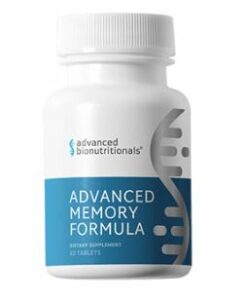 What Are the Symptoms of Angina in Women?
What Are the Symptoms of Angina in Women?
What are the symptoms of angina in women? According to a new study of 401,315 that live in 31 different countries the prevalence of angina in women was averaged at 6.7% while angina in men came in at an average of 5.7%.
This poses the question, are the symptoms of angina in women the same symptoms that men get or to put it another way do more women than men suffer from angina?
Let’s examine the facts, in this study the researchers considered the various risk factors for angina such as smoking, diet, and family history. They also looked at how these risks varied from country to country, they allowed for the variation and concluded that the prominence of angina was found to be 20% higher in women than in men.
When it comes to a heart attack more men have heart attacks than women.

Clinical studies image
Research
Researchers are still a bit puzzled as to the reasons why more men suffer heart attacks than women even when you take into consideration levels of high cholesterol. A research paper published in 2016 by Jama Internal Medicine pointed to a study of 34,000 men and women in Norway all had a heart attack (1979-2012) the study showed that during their lifetime men were twice as likely to have a heart attack compared to women.
Even taking into account normal risk factors for heart disease like high cholesterol, diabetes, high blood pressure, BMI, smoking, and the lack of physical activity it still does not explain why men have more heart attacks than women.
Some studies that were done prior to this one mentioned that when hormone levels drop it may offer some form of protection against heart disease before the onset of the menopause. The evidence isn’t conclusive because the drop in the numbers of women having a heart attack during menopause wasn’t significant.
What is angina?
Angina is medical terminology for chest pain or chest discomfort usually caused by a brief interruption to the blood flow and oxygen going to your heart. People who have angina describe it as a burning, suffocation or squeezing sensation normally behind the breastbone in the middle of the chest.
What does an angina attack feel like?
There are different types of angina, the signs and symptoms will depend on the type of angina that you have. An angina event or angina chest pain can occur at a time when your heart is beating fast, the pain can go away when you rest or stop.
The chest pain will feel like a great pressure or a squeezing feeling in your chest, the pain may spread to your arms, shoulder, neck, and jaw, these are also the symptoms of a heart attack.
Some people have described the angina attack as a stomach upset, the symptoms in women and men will vary.
Typical angina symptoms in women
For a woman to be classified as having definite angina she must display at least three of the following symptoms:
- Squeezing tight chest discomfort
- Oppressive below the sternum chest discomfort (provoked by exercise, exertion, emotional stress)
- Lasting longer than minutes discomfort radiating to the chest, jaws, left armpit and or the left arm.
- Discomfort radiating to the neck, shoulders and between the inter scapular (between the shoulder blades)
- Shortness of breath can be caused by anxiety or stress
- Extreme tiredness
- Not being able to breathe
 Angina is usually short lived but if you have angina your heart needs more oxygen, stop what you are doing, take a break use a nitro-glycerine pump if you have one.
Angina is usually short lived but if you have angina your heart needs more oxygen, stop what you are doing, take a break use a nitro-glycerine pump if you have one.
Nine times out of ten it’s a sign that you have a blockage somewhere in your arteries.
Angina is a warning that you need further treatment to reduce your risk of a heart attack, irregular heartbeat or a sudden cardiac arrest (the sudden loss of blood flow caused by heart failure)
What are the causes of angina in women?
Plaque build-up in the arteries leading to the heart restricts blood and can cause angina, less blood means less oxygen which triggers chest pain
Angina chest pain can also be triggered while exercising, doing physical activities, emotional stress, heavy meals, extreme temperatures, excessive alcohol and smoking.
Other causes Angina
Angina can also be caused by certain medical conditions such as:
CAD (Coronary artery disease)
Coronary artery disease (Blocked arteries) is the most common reason for angina. Female arteries are narrower than the male artery.
- When arteries are narrowed the heart doesn’t receive enough blood
- Less blood means less vital oxygen
- Your heart must work too hard when the blood flow and oxygen are reduced this leads to angina.
 Blood vessels contract
Blood vessels contract
A coronary artery spasm happens when there is a reduction of blood flow to the heart.
If the blood flow is too restricted the blood vessels contract causing angina or a heart attack.
Other risk factors
High blood pressure
Aortic stenosis (Narrowing of the valves in the heart)
An enlarged heart
Angina treatment
Angina can be controlled by a combination of medication and changes to your lifestyle, in certain cases it may be necessary to have surgery.
Types of Medication
The symptoms of stable angina may be helped by medication such as:
- Nitro or nitro-glycerine because it helps to open the coronary artery allowing a better flow of blood and oxygen to your heart
- Beta-blockers because they block the adrenaline effect on your heart, there are favourable advantages for people with stable angina. During exercise or stress your heart rate is slowed down reducing the force of contraction in the heart muscle,
- Anti-platelets because they contribute to making your blood less sticky which means less chance of a blood clot forming
- Calcium channel blockers because these drugs help to relax the blood vessels and improve the flow of blood to the heart.
Surgery
Because angina is caused mainly by blocked arteries in some cases surgery may be required where other treatments haven’t worked and where there is a danger of a heart attack or stroke. To widen the blocked artery angioplasty may be used where a stent is inserted through percutaneous coronary intervention or coronary by-pass surgery.
What are the alternatives?
Serrapeptase for angina has been used for many years because Serrapeptase is a safe to take enzyme that dissolves arterial plaque build-up, by doing this you improve the flow of blood to the heart and over time the angina will dissipate.
There are many testimonials from people that have succeeded in getting rid of angina using this enzyme, Click Here to read their stories



Leave a Reply
Leave a reply here